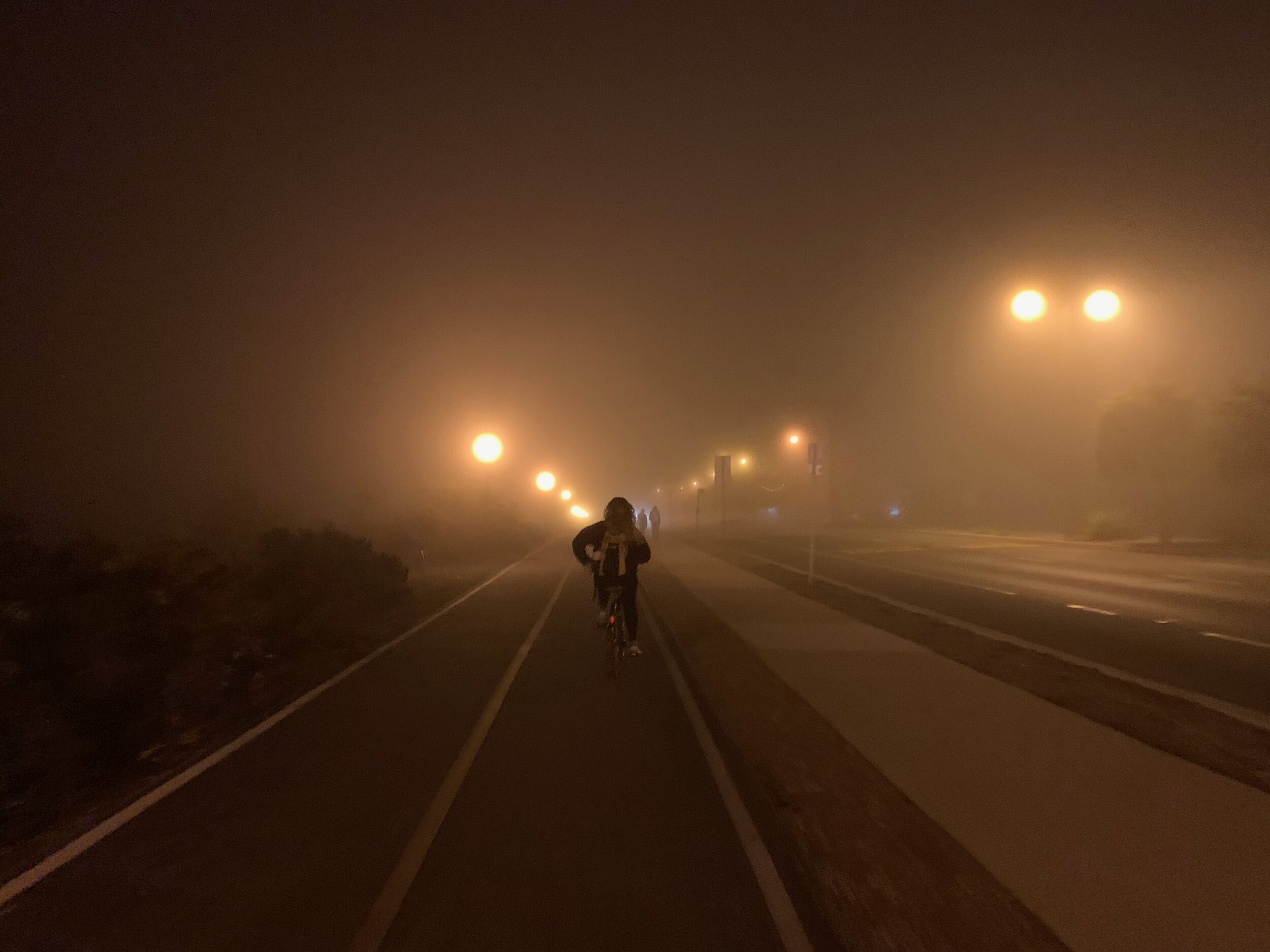In celebration of Earth Day and the 2020 UCSB Reads selection, author Elizabeth Rush spoke about her book, Rising: Dispatches from the New American Shore, to a live virtual audience. She explained that coastal communities in the United States are at risk due to rising sea levels and “retreating” from coastal communities is essential to mitigate the effects of climate change.
Earlier this spring the HFA held a creativity contest with the prompt “Stories That Matter.“ Please celebrate their talent with us and learn more about the winning students and the stories they told with their work in poetry, prose, music, videos, visual art, and photography.
“Numbers,” by Connor Ding won first place in the prose category of UC Santa Barbara’s Division of Humanities and Fine Arts spring creativity contest, in response to the prompt “Stories That Matter.“ The personal essay is about Ding’s family back in China during the winter weeks of the novel Coronavirus outbreak.
An essay in memory of survivors of the Holocaust and its lasting impacts. This piece won second place in the prose category of the HFA Creativity Contest and is a call to continue to interrogate what the Holocaust represents for us today.
“This is Not a Drill" won third place in the prose category of UC Santa Barbara’s Division of Humanities and Fine Arts spring creativity contest, in response to the prompt “Stories That Matter.“ The spoken word play focuses on school shootings and spreading awareness about the March For Our Lives movement.
Earlier this spring, UC Santa Barbara’s Division of Humanities and Fine Arts conducted a creativity contest on the theme “Stories That Matter.“ Explore the winning pieces in the video and music categories, including “What Would You Say” by Delenn Jadzia, “Days—An Experimental Narrative” by Jesse Camacho, “HAWAII” by Andy Arciaga, “First Love” by Jim Dyson, and “Canary” by Delenn Jadzia.
Earlier this spring, UC Santa Barbara’s Division of Humanities and Fine Arts conducted a creativity contest on the theme “Stories That Matter.“ Read the winning pieces in the poetry category here, including “re-forest-ation” by Forest Stuart, “Children of the Concrete” by Junho Jeon, and “Adulation to Him” by Monica Cornejo.
UC Santa Barbara’s music department is adapting online teaching methods to create virtual solo and chamber music sessions in light of COVID-19 social distancing measures.
At her virtual Friday evening book launch, UC Santa Barbara writing lecturer and former ballerina Ellen O’Connell Whittet spoke to over a hundred colleagues, friends, family, and students over Zoom about her new memoir: What You Become in Flight. O’Connell Whittet described how ballet normalizes “sacrificing the body, to contort it into something perfect” and why a career-ending injury made her consider how this principle impacted her life.
Though Carsey Wolf Center is unable to hold in-person film screenings this quarter due to COVID-19, post-film conversations with media experts from past screenings are available online. Catch up on previous discussions about filmmaking as Pollock Theater showcases past events as a weekly “Series Spotlight.”
UC Santa Barbara’s Art, Design and Architecture Museum has responded to its COVID-19 imposed closure by creating digital portals for the public to be able to tour exhibits and collections. Read more about it here, along with an invitation by acting directly Silvia Perea to engage with the museum via feedback comments.
Carly Maris, UC Riverside faculty member, tells about bringing her research from the Middle East to Southern California.
Fabio Rambelli, the chair of Religious Studies at UC Santa Barbara, organized a series of workshops exploring the music, dance, costumes, and history of Gagaku, the music and dance of the Japanese Imperial Court. The workshops, held last week, were led by the Hideaki Bunno Gagaku Ensemble, a small group of renowned musicians from Japan.
Hostile Terrain 94 is a political art installation that memorializes 3,200 migrants who died in their attempts to cross the Sonoran Desert at the Arizona-Mexico border. It has had a meaningful impact on the UCSB students who have participated in it since it opened in January at UCSB’s Art, Design and Architecture Museum.
Aaron Huey recently spoke at UC Santa Barbara about his journey from impassioned photojournalist to leader of one of one of the world’s largest art movements.
The talk, hosted by the Interdisciplinary Humanities Center was titled “Art as Compass,” and catalogued how Huey went from taking photos for National Geographic to founding Amplifier.org, a non-profit dedicated to the mass dissemination of art which amplifies voices that otherwise would go unheard.
Jill Lepore, a Harvard historian and New Yorker columnist discusses how she uses narrative techniques with historical arguments to explain modern political and social issues. The presentation was sponsored by UC Santa Barbara’s History Department.
To celebrate the recent addition of facsimiles of original William Faulkner manuscripts, the UC Santa Barbara library last week displayed a few of the volumes at an event where five undergraduate scholars in the English department presented their research, all of whom utilized the literary papers.
The 44 volumes of facsimiles — exact or high-quality copies — of original hand-written and typed manuscripts from renowned author William Faulkner, are now housed in the library’s Special Research Collections.
The Professional Writing Minor at UC Santa Barbara.held its annual information session last week, marking a pivotal moment for its applicants: It’s time to start preparing to apply for the coming year. The Minor has launched a new Journalism track, and now offers students a choice of six distinct areas of professional focus. The other tracks are: Business Communication, Civic Engagement, Multimedia Communication, Professional Editing, and Science Communication. Read more about this popular program here.
The UCSB Percussion Ensemble gave its performance for the quarter at Karl Geiringer Hall last week. The program, titled “Mostly Mallets, almost entirely featured compositions which were written and arranged for keyboard percussion instruments like the xylophone, marimba and vibraphone.

























